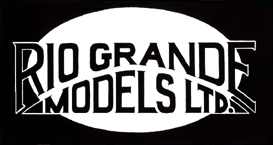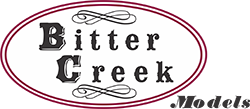

The West Side Lumber Company.
On May 31st 1898, The West Side Flume & Lumber Company was formed when William H. Crocker, Henry J. Crocker, Andre Poniatowski, Thomas Bullock and Charles Gardner bought 55,000 acres of timber just outside of present day Tuolumne (Then called "Carter's"). A small mill was constructed in Carter's, and a small railroad stretched out 10 miles east into the woods to Nashton.
Although most of the timber logged in the first years went straight to the building of the saw mill, by 1900 there was enough timber being brought into keep the mill going year round even though the railroad shut down during the winter.
In 1900 the West Side Flume & Lumber Co. incorporated their railroad as a common carrier, the Hetch Hetchy and Yosemite Valley hoping to offer passenger service to the Hetch Hetchy valley on to Yosemite National Park.
Passenger trains were operated twice weekly and later three times weekly. Ridership on the line was low with the primary riders being employees of the company.
In 1903 the operation was sold to W. R. Thorsten of Michigan and the corporate name was shortened to the West Side Lumber Co. In 1904 the railroad gave up on passenger service focusing on its growing lumber.
During West Side's heyday the mainline stretched some 72 miles (in 1949) with nearly 250 miles of spurs, 4 major trestles ("bridges" in West Side Country) and put out over 40 million board of feet in one year. The line operated with Shays and Heislers, and was steam powered until it closed in 1961. The West Side's last operating season was 1960, when the summer logging season ended in the fall the equipment was positioned in expection of another season starting in the Spring. Empty log cars were left in the woods, and the engines recieved normal winter maintenance. Then rather suddenly, the company announced that it would be cheaper to use contract trucks to haul the logs. In June 1961 one train was run in the woods to haul the empties to the mill, and the railroad was put on standby, to see how well the trucks worked. The logging railroad never ran again.
After closure there were several attempts to operate the railroad as a tourist line. The most famous of these was by Glen Bell, the founder of Taco Bell. Bell laid track around the mill property and converted most of the remaining mill site into a historic attraction, steam powered trains operated around the mill site while a gasoline powered motorcar ran trains out to the River Bridge site. However when these efforts failed the WS was sold off to various investors over the years, the remaining mill site property is currently owned by the Tuolumne Band of Me-Wuk Indians, of the Tuolumne Rancheria. Equipment from the West Side survives through out the country primarily on tourist railroads such as the Yosemite Mountain Sugar Pine, Roaring Camp, the Midwest Central and the Colorado Railroad Museum.
Reference Material Available Online:
Articles.
Requiem for the West Side Lumber Company by Hart Corbett.
A 50th anniversary reminiscence of the West Side Lumber Co. in Tuolumne, Ca. Includes many color images from 1959 and 2009.
Photographs.
Collected West Side Lumber Company Images.
Images collected from private collections, libraries and historical societies.
The West Side Lumber Company - 1966.
Photographs taken by Fritz Klinke during the summer of 1966.
A Life Wasted Chasing Trains - West Side Lumber Company.
Scenes captured by railroad photographer John West during 1959-1960.
The West Side Lumber Company - 1960 - 1963.
Photographs taken by Richard Essenberg between 1960 and 1963.
Rosters.
West Side Lumber Company - Locomotive Roster.
West Side Lumber Company - Caboose Roster compiled by Randy Hees. 515KB 
Donkey Engines Of Tuolumne County. Compiled by John Taubeck.
List of steam donkeys used by the West Side and Standard Lumber Co.
Historic References.
Report Of The State Board Of Equalization, 1907 - 1908 Assessment of West Side Lumber Co. Railroad in 1907 and 1908.
Report of the State Forester, 1912.. Review of logging practices in use by the West Side Lumber and Flume Co. at this time.
Includes description of logging methods, slash disposal and recent fires.
Report of the Conservation Comission, Timber Holdings for 1912. Report lists acreage held by logging companies per county.
Report lists the West Side as having 39,590 acres of timber lands in Tuolumne county.
Rules for Grading California White Pine and Sugar Pine Lumber, 1921. Adopted by the California White and Sugar Pine Manufacturers' Association June 2, 1916. Revised 1918 and April 22 1921.
Note: Supplimental Insert for adopted 1921 changes appears after page 132.
A Tramp Through The Bret Harte Country. By Thomas Dykes Beasly. Paul Elder & Company, San Francisco. 1914.
Brief description of the mill in Tuolumne
Tuolumne County For California Magazine. The California Promotion Committee, San Francisco. 1907. Promotional description of Tuolumne County, mention of West Side Flume and Lumber Co. as well as Hetch Hetchy & Yosemite Valley Railroad.
Description of Tuolumne. Tourist's California, Dodd, Mead and Company, New York. 1914.
Description of the common routes to Hetch Hetchy, listed is riding the railroad as far as Camp 16 (Thompson's Meadows).
Just Fishing, That's All by S.H. Smith.Sunset Magazine June, 1912.
Article discusses fishing around Tuolumne, author suggests taking the train to Tuolumne and then taking a free ride on the logging road to get within a mile of Thompson Meadows.
A Sierra Summer, by Camilla L. Kenyon. Out West Magazine, September 1904. Vol. 11 No. 3.
Description of summer camping trip, mentions occasional passenger car use on railroad. Author rode as far as Camp 12, noting it was now dismantled (Hetch Hetchy & Yosemite Valley).
Camping Above Yosemite By Harriet Monroe. Putnam's Magazine, April 1909.
Author mentions meeting up with logging crews outside Yosemite Park Boundry (Top of second paragraph, page 227).
Tuolumne City, Report of the California State Agricultural Society.
Description of the Tuolumne area including brief description of the West Side.
Organizations:
Tuolumne City Memorial Museum. Dedicated to preserving the history of Tuolumne and the West Side Lumber Company.
California \ West Side Lumber Company


